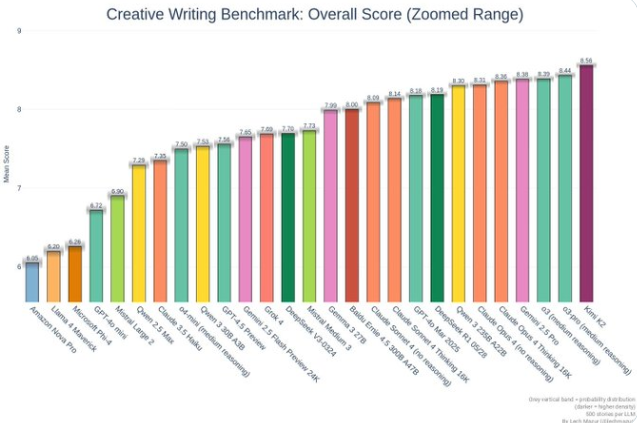Kimi K2 AI Wins Short Story Contest, Surpassing Rivals
Kimi K2 AI Wins Short Story Contest, Surpassing Rivals
Artificial intelligence continues to make waves in creative fields, with the Kimi K2 model recently claiming victory in a competitive short story writing evaluation. The open-source language model developed by Alibaba-backed Moonshot team outperformed the o3-Pro model, demonstrating significant progress in AI-assisted literary creation.

Benchmark Performance Highlights
In standardized tests like EQ-Bench, Kimi K2 excelled at generating short stories and expanding them into longer narrative structures. Judges noted its strengths in:
- Literary compression techniques
- Innovative metaphor usage
- Cohesive narrative elements
The model's submissions featured compact story structures and surprisingly sophisticated literary quality, with some entries approaching publishable standards. However, evaluators identified areas for improvement in emotional resonance and narrative tension, noting some passages felt overly mechanical.
Open Source Advantage
As an open-source model, Kimi K2 offers distinct advantages:
- Free access for users
- Low token costs ($0.15/million input tokens)
- Strong coding capabilities
- Efficient deployment options
This contrasts with paid alternatives like ChatGPT and Claude, making it particularly attractive to developers and content creators. Industry analysts attribute Kimi K2's success to its optimized instruction-following architecture, which enables precise interpretation of creative prompts and flexible integration of narrative components.
User Reception and Limitations
Early adopters praise Kimi K2's human-like writing style, particularly its:
- Natural punctuation usage (especially semicolons)
- Strong logical coherence in complex plots
- Effective multi-character development
However, users report limitations in:
- Korean language performance (brief, shallow outputs)
- Emotional depth compared to human writers
- Cultural nuance adaptation
The multilingual shortcomings suggest room for improvement despite its English-writing prowess.
Industry Impact
The victory establishes new benchmarks for AI creative writing while potentially influencing competitors' strategies. Unconfirmed reports suggest OpenAI may have delayed an open-source model release following Kimi K2's strong showing. The achievement highlights growing competition in the AI sector and validates open-source approaches to language model development.
The model's combination of affordability and performance could accelerate adoption of AI tools for:
- Literary drafting
- Content generation
- Creative brainstorming However, enhancing emotional impact and cultural sensitivity remains a key challenge for the field.
Future Prospects
As models like Kimi K2 evolve, their role in creative processes will likely expand from:
- Short story ideation
- Novel structure planning
- Writing assistance to more sophisticated collaborative applications. Future development priorities include improving multilingual capabilities and deepening cultural narrative understanding.
The AIbase team will continue monitoring Kimi K2's progress as it pushes boundaries in computational creativity.
Key Points
- Performance: Outperformed o3-Pro in creative writing benchmarks
- Cost Advantage: Open-source model with low token pricing
- Strengths: Human-like style, strong narrative coherence
- Limitations: Needs improvement in emotional depth and multilingual support
- Industry Impact: May influence competitors' open-source strategies